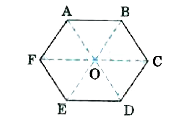Consider the points A(1,2,-1), B(2,5,1), and C(0,-1,-3):
Find −−→AB and −−→ACSolution in Malayalam
Step by step video & image solution for Consider the points A(1,2,-1)," " B(2,5,1)," " and" " C(0,-1,-3):Find oversetrarr(AB) " and " oversetrarr(AC) by Maths experts to help you in doubts & scoring excellent marks in Class 12 exams.
Updated on:21/07/2023Topper's Solved these Questions
Similar Questions
Consider the points A(0,0,2) and B(3,0,1) . Write direction ratio of the joining A and B.
View SolutionSupposing Newton's law of gravitation for gravitation force F1 and F2 between two masses m1 and m2 at positions r1 and r2 read F2=−F2=r12r312GM20(m1m2M20)n where M0 is a constant dimension of mass, r12=r1−r2 and n is number. In such a case.
View SolutionA charged particle can be deflected by electric and magnetic filed both The electric force→Fe=q→E and magnetic force −→Fm=→qv×→Bq = charge in coulomb, oversetrarrV is velocity in m//s →E is electric filed strengh in N/C and B is magnetic field strength in tesla (T) If a moving charged particle enters simultaneous electric and magnetic field, the net force on the charged particle is
→F=q(→E+→v×→B)
If →F=0 the charged particle will move undeflected in simultaneous fields
A charged particle moves in simultaneous electric field →E and magnetic field →B If the charged particle passes undeflected , then the value of electric field vectore →E must be .
View SolutionFind the value of λ or which the points A(2,5,1) ,B(1,2,-1) and C(3,λ,3) are collinear .
View Solutionबिन्दुओ A,B,C के स्थिति - सदिश क्रमशः (1,2,−1),(2,0,3) तथा (3,−1,2) है। रेखाओ AB और AC के बीच का कोण ज्ञात कीजिए।
View SolutionPQRS is a parallelogram and oversetrarr(QS) and oversetrarr(PR) are its diagonals .Show that vec(PR)+ vec(QS)-2vec(QR)=0
View SolutionFor a regular hexagon ABCDEF shown below , prove that
−−→AB+−−→AC+−−→AD+−−→AE+−−→AF=6−−→AO.

View SolutionConsider
A=[1x1],B=⎡⎢⎣1322511532⎤⎥⎦,C=⎡⎢⎣12x⎤⎥⎦
Find x if ABC=0.
View SolutionCan we beam oversetrarr(OA) Ray of oversetrarr(AO) Can write Why? Or why not?
View SolutionGiven co-ordinates of the points A and B as (−1,−2) and (−5,−6) respectively, what is the magnitude of −−→AB ?
View SolutionFind the direction cosines of the vectors, →r1−→r2 whaere →r1=ˆi+ˆj+ˆk and →r2=2ˆi+ˆj+2ˆk.
View Solution→aand−−→−a are collinear (true or false)
View SolutionSuppose ABC is a triangle and D and E are the mid points of AB and AC respectively.
Choose the correct answer from the bracket and fill in the blank
−−→BA+−−→AC=……
(oversetrarr(CB),oversetrarr(BC),1/2 oversetrarrr(BC),2oversetrarr(BC))
View SolutionSuppose a and b represent in magnitude and direction the two sides AB and BC of the regular hexagon ABCDEF as shown in the figure.Find −−→CD,−−→DE,−−→EFand −−→FA in terms of →a"and"oversetrarrb
View SolutionThe position vectors of the points A,B,C are given to be ∧i+2∧j+3∧k,4∧i+4∧k and −2∧k respectively.
Find −−→AB and −−→AC
View SolutionIn triangle ABC, which of the following is not true.
 a)−−→AB+−−→BC+−−→CA=→0
b)−−→AB+−−→BC−−−→AC=→0
c) −−→AB+−−→BC−−−→CA=→0
d)−−→AB−−−→CB+−−→CA=→0
a)−−→AB+−−→BC+−−→CA=→0
b)−−→AB+−−→BC−−−→AC=→0
c) −−→AB+−−→BC−−−→CA=→0
d)−−→AB−−−→CB+−−→CA=→0
View Solution
